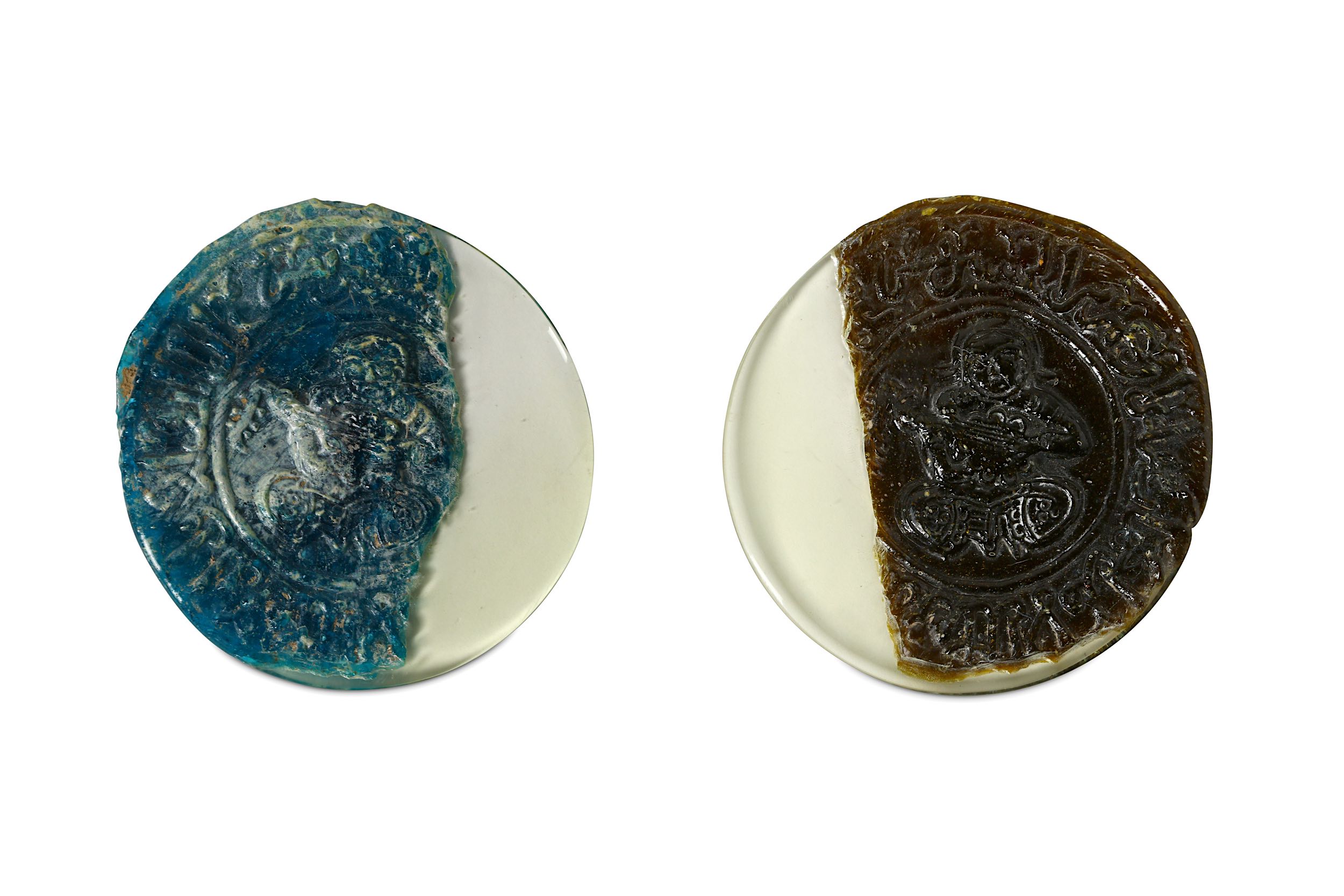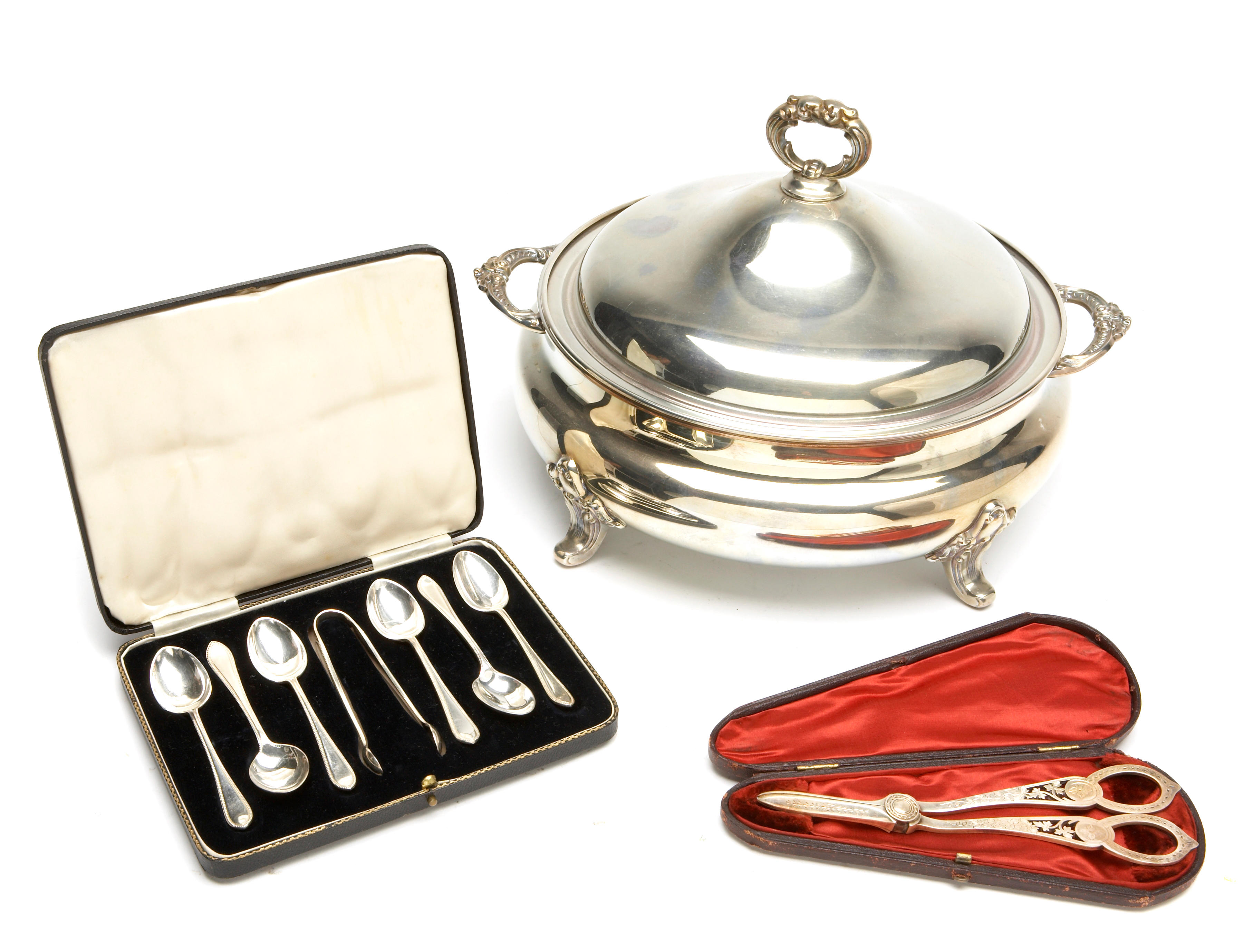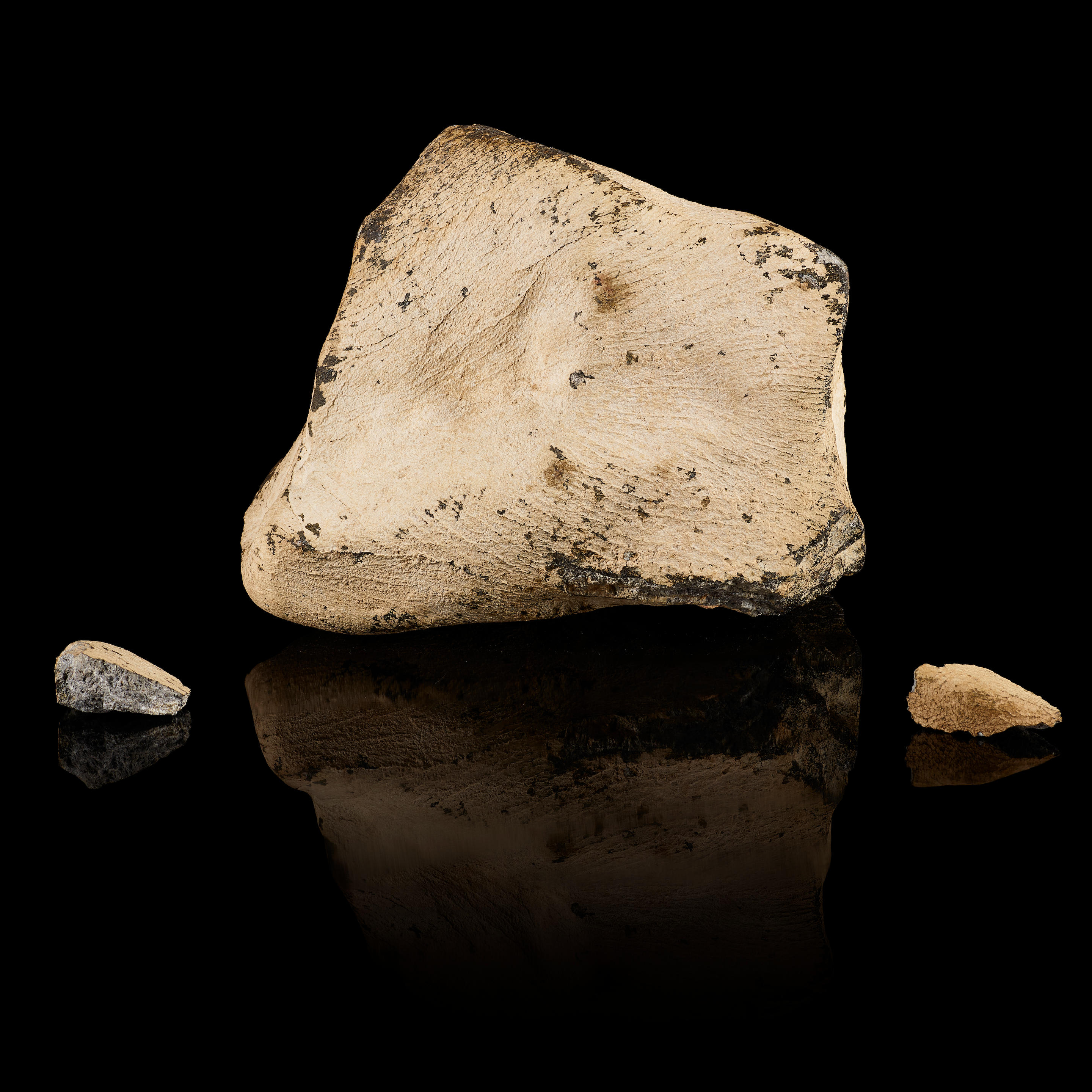TWO FRAGMENTS OF HOT-WORKED GLASS MEDALLIONS Central Asia, late 12th century Each of circular shape, with an impressed hot-worked pattern in relief on one side and plain on the reverse, the decoration on both consisting of a frontal view of a lute player seated cross-legged, with a well-defined round face and thick eyebrows, wearing a long embroidered tunic, the lute with a multi-lobed body and a long neck, a naskh calligraphic inscription impressed in a band on the outer perimeter of the medallions, mounted in a white velvet-lined blue leather box, max. diam. 9.5cm. Provenance: Acquired in 1960’s – 1970’s in Iran and in the UK since 1981. The shape, the inscription and the decoration of these medallions appear to perfectly match a similarly hot-worked circular medallion now part of the permanent al-Sabah Collection, exhibited at the National Museum, Dar al-Athar al-Islamiyyah, in Kuwait. As Stefano Carboni points out, the medallion in this collection is representative of a fairly large group of glass medallions, which appeared on the Western art market in the 1980s and 1990s (Stefano Carboni and David Whitehouse, Glass of the Sultans, New York, 2001, pp. 133 - 136). Mostly excavated from the ruins of 12th - 13th-century Ghaznavid and Ghurid palaces in Tirmidh (old Termez) and Ghazna, they seem to have served as window decorations. They range widely in colour and seem to have favoured figural decorative motifs over abstract, non-figural ones. Inscriptions on several of these medallions helped experts cast light on their attribution, date and owners. As with the al-Sabah medallion, both our medallions present a naskhi inscription dedicated to a Ghurid atabeg, The Pillar of State and Religion, the Emir 'Umar ibn al-Husayn Nusra, which is also found on other medallions at the Tareq Rajab Museum. Carboni believes that the choice of the lute player as the main subject on these medallions goes well beyond the straightforward image of royal entertainment. Indeed, it showcases the Ghaznavid and Ghurid rulers' strong interest in Sasanian iconography and their effort to emulate the Sasanian rulers, establishing themselves as the champions of Islam (Stefano Carboni, 2001, p. 136). That said, the lute player motif was also very dear to the Iranian 12th - 13th-century ceramic production (please see Kashan lustre and polychrome-glazed mina'i wares). It could thus be debated whether the source of inspiration harked all the way back to Sasanian models or instead to the widely available and more recent Seljuk wares.
TWO FRAGMENTS OF HOT-WORKED GLASS MEDALLIONS Central Asia, late 12th century Each of circular shape, with an impressed hot-worked pattern in relief on one side and plain on the reverse, the decoration on both consisting of a frontal view of a lute player seated cross-legged, with a well-defined round face and thick eyebrows, wearing a long embroidered tunic, the lute with a multi-lobed body and a long neck, a naskh calligraphic inscription impressed in a band on the outer perimeter of the medallions, mounted in a white velvet-lined blue leather box, max. diam. 9.5cm. Provenance: Acquired in 1960’s – 1970’s in Iran and in the UK since 1981. The shape, the inscription and the decoration of these medallions appear to perfectly match a similarly hot-worked circular medallion now part of the permanent al-Sabah Collection, exhibited at the National Museum, Dar al-Athar al-Islamiyyah, in Kuwait. As Stefano Carboni points out, the medallion in this collection is representative of a fairly large group of glass medallions, which appeared on the Western art market in the 1980s and 1990s (Stefano Carboni and David Whitehouse, Glass of the Sultans, New York, 2001, pp. 133 - 136). Mostly excavated from the ruins of 12th - 13th-century Ghaznavid and Ghurid palaces in Tirmidh (old Termez) and Ghazna, they seem to have served as window decorations. They range widely in colour and seem to have favoured figural decorative motifs over abstract, non-figural ones. Inscriptions on several of these medallions helped experts cast light on their attribution, date and owners. As with the al-Sabah medallion, both our medallions present a naskhi inscription dedicated to a Ghurid atabeg, The Pillar of State and Religion, the Emir 'Umar ibn al-Husayn Nusra, which is also found on other medallions at the Tareq Rajab Museum. Carboni believes that the choice of the lute player as the main subject on these medallions goes well beyond the straightforward image of royal entertainment. Indeed, it showcases the Ghaznavid and Ghurid rulers' strong interest in Sasanian iconography and their effort to emulate the Sasanian rulers, establishing themselves as the champions of Islam (Stefano Carboni, 2001, p. 136). That said, the lute player motif was also very dear to the Iranian 12th - 13th-century ceramic production (please see Kashan lustre and polychrome-glazed mina'i wares). It could thus be debated whether the source of inspiration harked all the way back to Sasanian models or instead to the widely available and more recent Seljuk wares.

.jpg)

.jpg)


/89901/Internet%20Image%202.jpg)
/70499/Internet%20Image%201.jpg)


/74437/Internet%20Image%201.jpg)


Try LotSearch and its premium features for 7 days - without any costs!
Be notified automatically about new items in upcoming auctions.
Create an alert